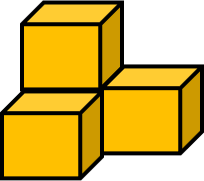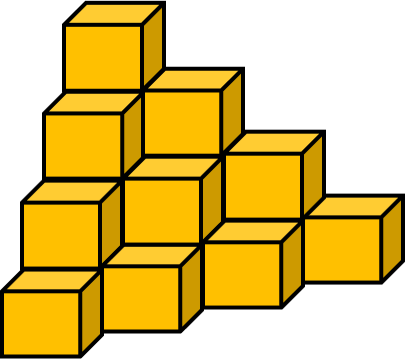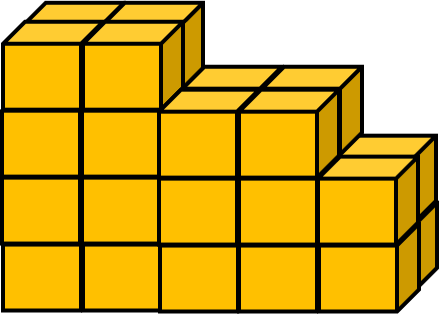Counting Blocks
A number of cubes (or cuboids) are shown in a figure and they need to be counted.
Let’s see some examples.
Finding all the cubes
Q. Count the number of cubes in the given figure.

(a) 3 (b) 4 (c) 5 (d) 6
Explanation:
There are 2 cubes in one column and 1 cube in two columns.
So, total cubes = (2 × 1) + (1 × 2) = 4
Answer: (b)
So, total cubes = (2 × 1) + (1 × 2) = 4
Answer: (b)
Q. How many cubes are there in the group?

(a) 10 (b) 16 (c) 18 (d) 20
Explanation:
There are 4 cubes in one column; 3 cubes in two columns; 2 cubes in three columns and 1 cube in four columns.
Total number of cubes = 4 × 1 + 3 × 2 + 2 × 3 + 1 × 4 = 20
Answer: (a)
Total number of cubes = 4 × 1 + 3 × 2 + 2 × 3 + 1 × 4 = 20
Answer: (a)
Finding unseen cubes
Cubes that cannot be seen = Total cubes - Cubes that are visible
Q. Few cubes are arranged as shown in the figure. How many cubes are unseen ?

(a) 10 (b) 16 (c) 18 (d) 20
Explanation:
There are 4 cubes in four columns; 3 cubes in four columns and 2 cubes in two columns.
Total number of cubes = (4 × 4) + (3 × 4) + (2 × 2) = 32
Total number of visible cubes = 16 + 6 = 22
So, Total number of unseen cubes = Total cubes - Cubes that are visible = 32 – 22 = 10
Answer: (d)
Total number of cubes = (4 × 4) + (3 × 4) + (2 × 2) = 32
Total number of visible cubes = 16 + 6 = 22
So, Total number of unseen cubes = Total cubes - Cubes that are visible = 32 – 22 = 10
Answer: (d)